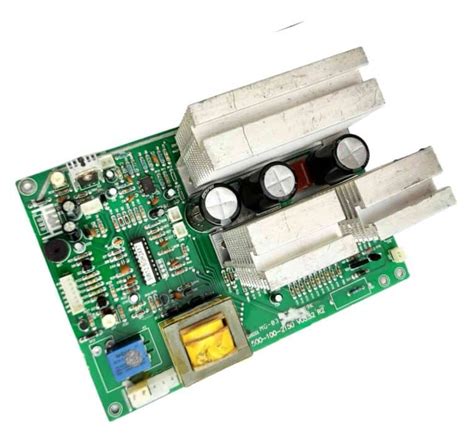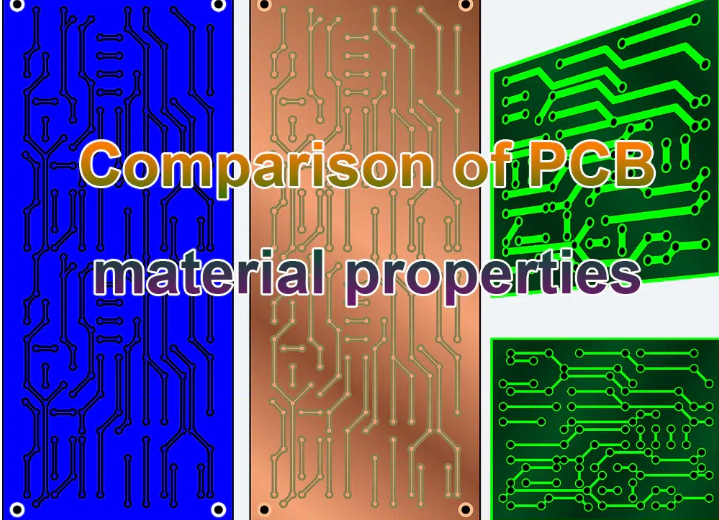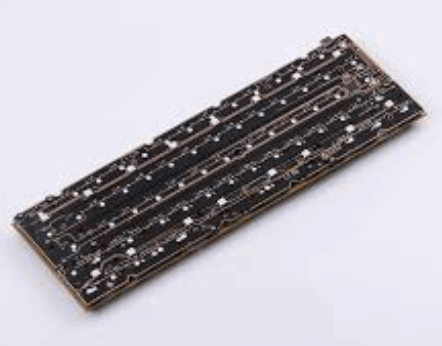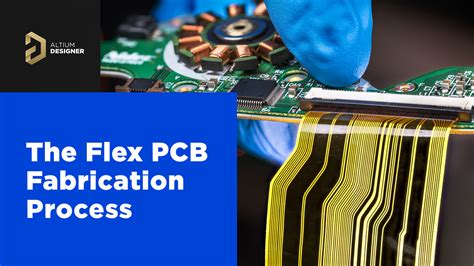Partition design of mixed-signal PCB
How to reduce the mutual interference between digital signals and analog signals?
Before designing, we must understand the two basic principles of electromagnetic compatibility (EMC): the first principle is to reduce the area of the current loop as much as possible; the second principle is that the system uses only one reference plane. On the contrary, if there are two reference planes in the system, a dipole antenna may be formed (Note: the radiation size of a small dipole antenna is proportional to the length of the line, the current flowing through it, and the frequency); and if the signal cannot return through the smallest possible loop, a large loop antenna may be formed (Note: the radiation size of a small loop antenna is proportional to the loop area, the current flowing through the loop, and the square of the frequency). These two situations should be avoided as much as possible in the design.
Some people suggest that the digital ground and analog ground on the mixed-signal circuit board be separated, so that the digital ground and analog ground can be isolated.
Although this method is feasible, there are many potential problems, especially in complex large systems. The most critical problem is that the wiring cannot be crossed across the split gap. Once the wiring is crossed across the split gap, electromagnetic radiation and signal crosstalk will increase sharply. The most common problem in PCB design is that the signal line crosses the split ground or power supply and generates EMI.

As shown in Figure 1, we use the above split method, and the signal line crosses the gap between the two grounds. What is the return path of the signal current? Assuming that the two split grounds are connected together somewhere (usually at a single point at a certain location), in this case, the ground current will form a large loop. High-frequency current flowing through the large loop will generate radiation and high ground inductance. If the current flowing through the large loop is a low-level analog current, the current is easily interfered by external signals. The worst is that when the split ground is connected together at the power supply, a very large current loop will be formed. In addition, the analog ground and the digital ground are connected together through a long wire to form a dipole antenna.
Understanding the path and method of current return to the ground is the key to optimizing the design of mixed-signal circuit boards. Many design engineers only consider where the signal current flows, but ignore the specific path of the current. If the ground layer must be split and the wiring must be routed through the gap between the splits, a single-point connection can be made between the split grounds to form a bridge between the two grounds, and then the wiring can be routed through the bridge. In this way, a direct current return path can be provided under each signal line, so that the loop area formed is very small.
The use of optical isolation devices or transformers can also achieve signal crossing the split gap. For the former, it is the optical signal that crosses the split gap; in the case of using a transformer, it is the magnetic field that crosses the split gap. Another feasible way is to use differential signals: the signal flows from one line and returns from another signal line. In this case, the ground is not required as a return path.
To explore the interference of digital signals on analog signals in depth, we must first understand the characteristics of high-frequency currents. High-frequency currents always choose the path with the lowest impedance (lowest inductance) directly below the signal, so the return current will flow through the adjacent circuit layer, regardless of whether the adjacent layer is the power layer or the ground layer.
In actual work, it is generally preferred to use a unified ground and divide the PCB into analog and digital parts. Analog signals are routed in the analog area of all layers of the circuit board, while digital signals are routed in the digital circuit area. In this case, the return current of the digital signal will not flow into the ground of the analog signal.
Only when the digital signal is routed on the analog part of the circuit board or the analog signal is routed on the digital part of the circuit board, will the digital signal interfere with the analog signal. This problem does not occur because there is no segmentation, but the real reason is the improper routing of the digital signal.
PCB design uses a unified ground, through the partitioning of digital and analog circuits and appropriate signal routing, it can usually solve some more difficult layout and routing problems, and at the same time will not cause some potential troubles caused by ground segmentation. In this case, the layout and partitioning of components become the key to determining the quality of the design. If the layout and routing are reasonable, the digital ground current will be limited to the digital part of the circuit board and will not interfere with the analog signal. Such routing must be carefully checked and verified to ensure that the routing rules are 100% followed. Otherwise, an improper signal line routing will completely destroy an originally very good circuit board.
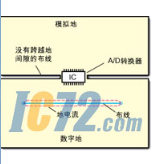
When connecting the analog ground and digital ground pins of the A/D converter together, most A/D converter manufacturers recommend: connecting the AGND and DGND pins to the same low-impedance ground through the shortest lead (Note: because most A/D converter chips do not connect the analog ground and digital ground together, the connection between the analog and digital grounds must be achieved through external pins). Any external impedance connected to DGND will couple more digital noise to the analog circuit inside the IC through parasitic capacitance. According to this suggestion, both the AGND and DGND pins of the A/D converter need to be connected to the analog ground, but this method will produce problems such as whether the ground end of the digital signal decoupling capacitor should be connected to the analog ground or the digital ground.
If the system has only one A/D converter, the above problem is easy to solve. As shown in Figure 3, split the ground and connect the analog ground and digital ground parts together under the A/D converter. When taking this method, it is necessary to ensure that the width of the connection bridge between the two grounds is the same as the width of the IC, and no signal line can cross the split gap.
If there are many A/D converters in the system, for example, how to connect 10 A/D converters? If the analog ground and digital ground are connected together under each A/D converter, multiple points will be connected, and the isolation between the analog ground and the digital ground will be meaningless. If it is not connected in this way, it will violate the manufacturer’s requirements.
The best way is to use a unified ground at the beginning. As shown in Figure 4, the unified ground is divided into the analog part and the digital part. Such layout and wiring not only meets the requirements of IC device manufacturers for low-impedance connection of analog ground and digital ground pins, but also does not form loop antennas or dipole antennas to cause EMC problems.
If you have doubts about the use of a unified ground for mixed-signal PCB design, you can use the ground layer segmentation method to layout and route the entire circuit board. When designing, pay attention to making the circuit board easy to connect the segmented grounds together with jumpers or 0 ohm resistors with a spacing less than 1/2 inch in the subsequent experiments. Pay attention to partitioning and routing, and ensure that no digital signal lines are located above the analog part on all layers, and no analog signal lines are located above the digital part. In addition, no signal line can cross the ground gap or the gap between the split power supplies. To test the functionality and EMC performance of the circuit board, connect the two grounds together through a 0 ohm resistor or jumper, and retest the functionality and EMC performance of the circuit board. Comparing the test results, it is found that in almost all cases, the unified ground solution is superior to the split ground in terms of functionality and EMC performance.
Is the split ground method still useful?
This method can be used in the following three situations: some medical devices require low leakage current between the circuits and systems connected to the patient; the outputs of some industrial process control equipment may be connected to noisy and high-power electromechanical devices; another situation is when the PCB layout is subject to specific restrictions.
There are usually independent digital and analog power supplies on mixed-signal PCBs, and split power planes can and should be used. However, signal lines adjacent to the power supply layer cannot cross the gap between the power supplies, and all signal lines crossing the gap must be located on the circuit layer adjacent to the large area of ground. In some cases, designing the analog power supply as a PCB connection line instead of a plane can avoid the problem of power plane segmentation.
Mixed-signal PCB design is a complex process, and the following points should be paid attention to during the design process:
- Partition the PCB into independent analog and digital parts.
- Appropriate component layout.
- Place A/D converters across partitions.
- Do not split the ground. Lay a unified ground under the analog and digital parts of the circuit board.
- In all layers of the circuit board, digital signals can only be routed in the digital part of the circuit board.
- In all layers of the circuit board, analog signals can only be routed in the analog part of the circuit board.
- Implement analog and digital power supply segmentation.
- The routing cannot cross the gap between the split power supply surfaces.
- The signal lines that must cross the gap between the split power supplies must be located on the routing layer next to the large area of ground.
- Analyze the path and method of the actual flow of the return ground current.
- Use correct routing rules.

